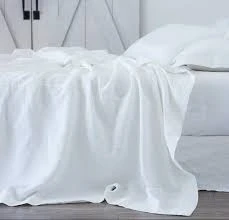Jan.17, 2025 04:02
Back to list
different types of bedding material
Exploring the realm of bedding types offers a seamless blend of comfort, function, and style, catering to diverse preferences and needs. This guide delves into the essentials of different bedding types, aiming to enhance your understanding and choice with insightful expertise.
Pillows Support and Ergonomics Pillows contribute to spinal alignment and comfort during sleep. The variety of fillings, including memory foam, latex, feather, and down, each offer distinct support benefits. Memory foam pillows provide conforming support, ideal for back and side sleepers, reducing pressure points. Latex pillows, resilient and hypoallergenic, maintain their shape well, supporting various sleep positions. Feather and down pillows offer softness and adjustability, yet may not provide adequate support for everyone, potentially posing issues for those with allergies. The choice of pillow should align with individual sleeping positions and comfort preferences to prevent neck and back pain. Mattress Types Foundation for Sleep Health The mattress is the most crucial bedding component, significantly influencing sleep quality. Innerspring mattresses, consisting of coil support systems, offer durability and a range of firmness levels. Memory foam mattresses are celebrated for contouring to body shape, reducing motion transfer, and providing pressure relief. Latex mattresses, eco-friendly and durable, offer a responsive and supportive sleep surface. Hybrid mattresses, combining innerspring coils with foam or latex, aim to deliver the benefits of both systems, offering support with comfort. Adjustable air mattresses provide customizable firmness, benefitting couples with differing firmness preferences. Choosing the Right Bedding Selecting the right bedding entails considering material properties, personal comfort, and health needs. Ensuring hypoallergenic materials for sensitive individuals, assessing breathability for temperature regulation, and considering the ease of cleaning and maintenance are pivotal. Trustworthiness in these products often comes from reputable brands and certifications, such as OEKO-TEX Standard 100 or CertiPUR-US for materials, ensuring safety and quality. Consulting trusted reviews and expert opinions also enhance informed decisions, fostering a harmonized balance between comfort, aesthetics, and practical needs. Whether prioritizing eco-friendliness, luxury, or functionality, understanding different bedding types empowers you to create a sleep sanctuary tailored to unique preferences and lifestyles.


Pillows Support and Ergonomics Pillows contribute to spinal alignment and comfort during sleep. The variety of fillings, including memory foam, latex, feather, and down, each offer distinct support benefits. Memory foam pillows provide conforming support, ideal for back and side sleepers, reducing pressure points. Latex pillows, resilient and hypoallergenic, maintain their shape well, supporting various sleep positions. Feather and down pillows offer softness and adjustability, yet may not provide adequate support for everyone, potentially posing issues for those with allergies. The choice of pillow should align with individual sleeping positions and comfort preferences to prevent neck and back pain. Mattress Types Foundation for Sleep Health The mattress is the most crucial bedding component, significantly influencing sleep quality. Innerspring mattresses, consisting of coil support systems, offer durability and a range of firmness levels. Memory foam mattresses are celebrated for contouring to body shape, reducing motion transfer, and providing pressure relief. Latex mattresses, eco-friendly and durable, offer a responsive and supportive sleep surface. Hybrid mattresses, combining innerspring coils with foam or latex, aim to deliver the benefits of both systems, offering support with comfort. Adjustable air mattresses provide customizable firmness, benefitting couples with differing firmness preferences. Choosing the Right Bedding Selecting the right bedding entails considering material properties, personal comfort, and health needs. Ensuring hypoallergenic materials for sensitive individuals, assessing breathability for temperature regulation, and considering the ease of cleaning and maintenance are pivotal. Trustworthiness in these products often comes from reputable brands and certifications, such as OEKO-TEX Standard 100 or CertiPUR-US for materials, ensuring safety and quality. Consulting trusted reviews and expert opinions also enhance informed decisions, fostering a harmonized balance between comfort, aesthetics, and practical needs. Whether prioritizing eco-friendliness, luxury, or functionality, understanding different bedding types empowers you to create a sleep sanctuary tailored to unique preferences and lifestyles.
Next:
Latest news
-
Garment Washed Sheets Color Retention Prevents Fading After WashesNewsNov.14, 2025
-
Charcoal Bamboo Sheets Moisture-Wicking Property Enhances Sleep ComfortNewsNov.12, 2025
-
High Quality Satin Sheets Soft Touch Improves Hotel Guest ExperienceNewsNov.12, 2025
-
Poly Cotton Sheets Breathable Weave Reduces Skin Irritation For PatientsNewsNov.12, 2025
-
Microfiber Sheet Stain Resistant Feature Eases Hotel HousekeepingNewsNov.12, 2025
-
Polyester Cotton Bedding Durable Fabric Withstands Frequent Hotel WashesNewsNov.12, 2025
-
Microfiber Pillow Filling Even Distribution Prevents LumpingNewsNov.03, 2025






